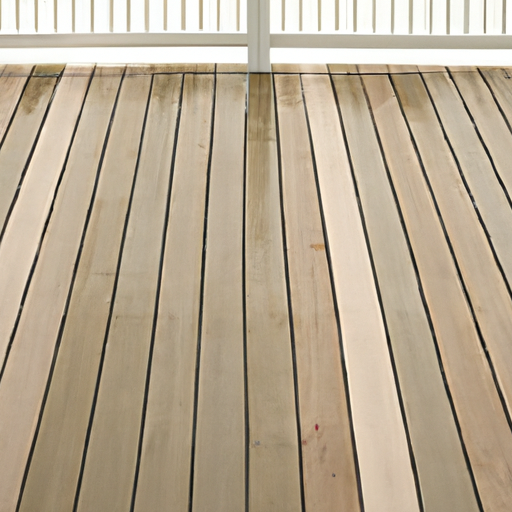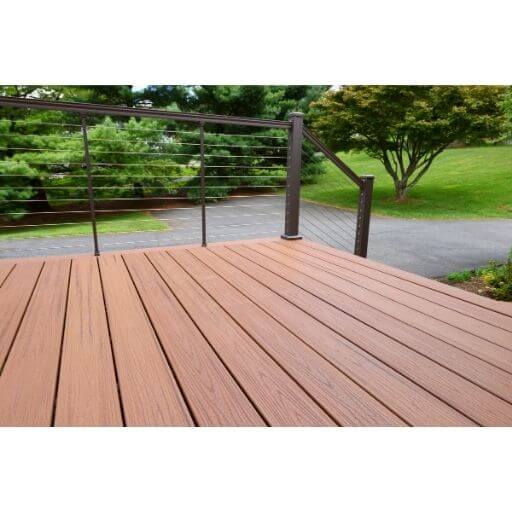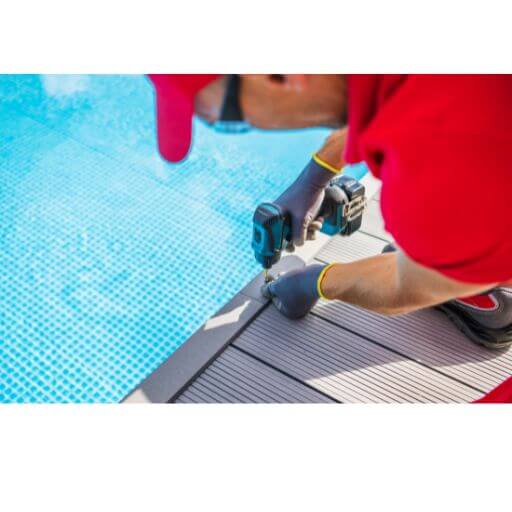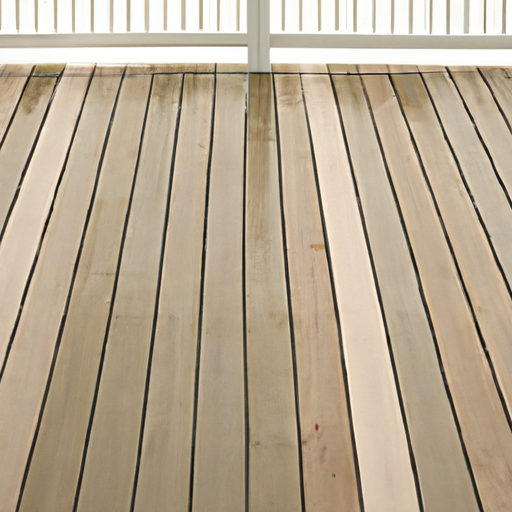
Composite decking has become a popular choice for homeowners seeking a low-maintenance and durable outdoor space. However, like any other product, it comes with its fair share of problems. In this article, we will explore some of the most common issues encountered with composite decking, shedding light on what you need to watch out for to ensure a long-lasting and beautiful deck. From fading colors to mold growth, we will discuss practical solutions and prevention measures that will help you enjoy your composite deck for years to come.

Fading
Composite decking is a popular choice for outdoor spaces due to its durability and low maintenance. However, one of the common problems that homeowners may face with composite decking is fading. This occurs due to prolonged sun exposure. Over time, the intense ultraviolet (UV) radiation from the sun can cause the color of the decking to fade, resulting in a dull and worn-out appearance.
To prevent fading, it is important to choose composite decking that is specifically designed to resist UV radiation. Quality composite materials often incorporate UV inhibitors that help to protect against fading. Additionally, homeowners can minimize sun exposure by strategically placing furniture or adding shade structures to their outdoor spaces. Regular cleaning and maintenance will also help to preserve the color and prevent further fading.
Mold and Mildew Growth
Another common problem with composite decking is the growth of mold and mildew. This is usually caused by excessive moisture accumulation on the surface of the decking. In areas with high humidity or frequent rainfall, moisture can seep into the crevices of the composite boards, creating a favorable environment for mold and mildew to thrive.
To prevent mold and mildew growth, it is important to ensure proper water drainage from the decking surface. Regular cleaning with a mild detergent and water can also help to remove any existing mold or mildew. Additionally, homeowners should avoid placing potted plants directly on the decking surface, as this can trap moisture and contribute to mold growth. Proper ventilation and periodic inspections will help to identify and address any moisture-related issues in a timely manner.
Scratching and Staining
Composite decking is designed to be resistant to scratches. However, it is not entirely scratch-proof, and certain materials or objects can still cause scratches on the surface. Additionally, spills and stains can also occur, especially if the decking is not properly cleaned and maintained.
To prevent scratching, homeowners should avoid dragging heavy furniture or sharp objects across the decking surface. Using furniture pads or protective mats can help to minimize the risk of scratches. In the case of spills and stains, it is important to clean them up promptly to prevent permanent discoloration. Regular cleaning with a mild detergent and water will also help to maintain the appearance of the decking and prevent staining.
Expansion and Contraction
Composite decking is susceptible to expansion and contraction due to temperature fluctuations. When exposed to extreme heat, the decking boards may expand, causing gaps to appear between the boards. Conversely, in cold temperatures, the boards may contract, resulting in a tight and compressed surface.
To minimize the effects of expansion and contraction, it is important to choose composite decking with a low coefficient of thermal expansion. Proper installation techniques, such as leaving adequate spacing between the boards, will also allow for natural expansion and contraction. Homeowners should also be mindful of extreme temperature changes and consider using measures such as awnings or shade structures to protect the decking from prolonged sun exposure or extreme cold.
Structural Issues
Composite decking is designed to be strong and durable, but there are instances where structural issues can arise. Substandard materials or improper support during installation can result in sagging, flexing, or even collapse of the decking.
To avoid structural issues, it is crucial to choose high-quality composite materials from reputable manufacturers. Proper installation and support, including using the recommended fasteners and following manufacturer guidelines, are essential in ensuring the structural integrity of the decking. Regular inspections and maintenance will help to identify any signs of structural weakness and allow for timely repairs or reinforcements.
Slippery Surface
Composite decking, especially when wet, can be slippery. Moisture buildup from rain or snow, coupled with the lack of texture on the decking surface, can pose a slip and fall hazard. In colder climates, ice and snow accumulation can further increase the risk of slipping.
To improve traction and reduce the slippery nature of composite decking, homeowners can consider adding texture to the surface. This can be achieved by applying an anti-slip coating or installing slip-resistant treads. Regular cleaning and removal of debris will also help to prevent moisture buildup. In areas prone to ice and snow, using de-icing agents or adding grit or sand to the decking surface can further enhance traction and reduce the risk of slips and falls.

Sagging and Flexing
Sagging and flexing of composite decking can occur when the support structure is inadequate or unable to bear the weight placed on it. Overloading the decking with heavy furniture or excessive weight can lead to sagging and a compromised surface.
To prevent sagging and flexing, it is important to ensure proper support during the installation of the decking. This includes using the recommended support joist spacing and ensuring that the support structure is sturdy and level. Homeowners should also be mindful of the weight placed on the decking and avoid overloading it. Regular inspections and maintenance will help to identify any signs of sagging or flexing and allow for timely reinforcement or repairs.
Splintering
Splintering is another common problem that can occur with composite decking, particularly as it ages and weathers. Exposure to the elements, including sunlight and moisture, can cause the decking boards to become brittle and prone to splintering. Furthermore, low-quality composite materials may also be more susceptible to splintering.
To minimize the risk of splintering, homeowners should choose high-quality composite decking from reputable manufacturers. Regular cleaning and maintenance, including sealing or staining the decking, can help to protect against moisture absorption and prevent splintering. Additionally, avoiding dragging heavy objects or using sharp tools on the surface of the decking will help to preserve its integrity.
Warping and Fading
Composite decking is vulnerable to warping, which is characterized by a distortion or curvature of the decking boards. This can occur due to moisture absorption or temperature changes, particularly when there is inadequate ventilation or drainage. Furthermore, warping can also contribute to fading, as moisture trapped within the decking can accelerate color fading.
To prevent warping and fading, it is crucial to ensure proper water drainage and ventilation around the decking. Regular inspections and maintenance will help to identify and address any drainage or ventilation issues in a timely manner. Additionally, choosing composite decking with a low water absorption rate and incorporating UV inhibitors will help to enhance its resistance to warping and fading.
Installation Issues
Improper installation can lead to a multitude of problems with composite decking. Inaccurate spacing between the boards, improper fastening of the decking to the support structure, or using incorrect installation techniques can compromise the integrity and performance of the decking.
To avoid installation issues, it is important to follow the manufacturer’s guidelines and recommendations. This includes using the recommended fasteners, leaving adequate spacing between the boards to allow for expansion and contraction, and ensuring the decking is properly secured to the support structure. If unsure, it is advisable to consult a professional installer or seek guidance from the manufacturer to ensure the correct installation procedures are followed.
In conclusion, while composite decking offers many benefits, it is important for homeowners to be aware of the potential problems they may encounter. Fading, mold and mildew growth, scratching and staining, expansion and contraction, structural issues, slippery surfaces, sagging and flexing, splintering, warping and fading, as well as installation issues, are common challenges that can arise. However, by selecting high-quality composite materials, conducting regular maintenance, and following proper installation procedures, homeowners can enjoy their composite decking for many years to come.

